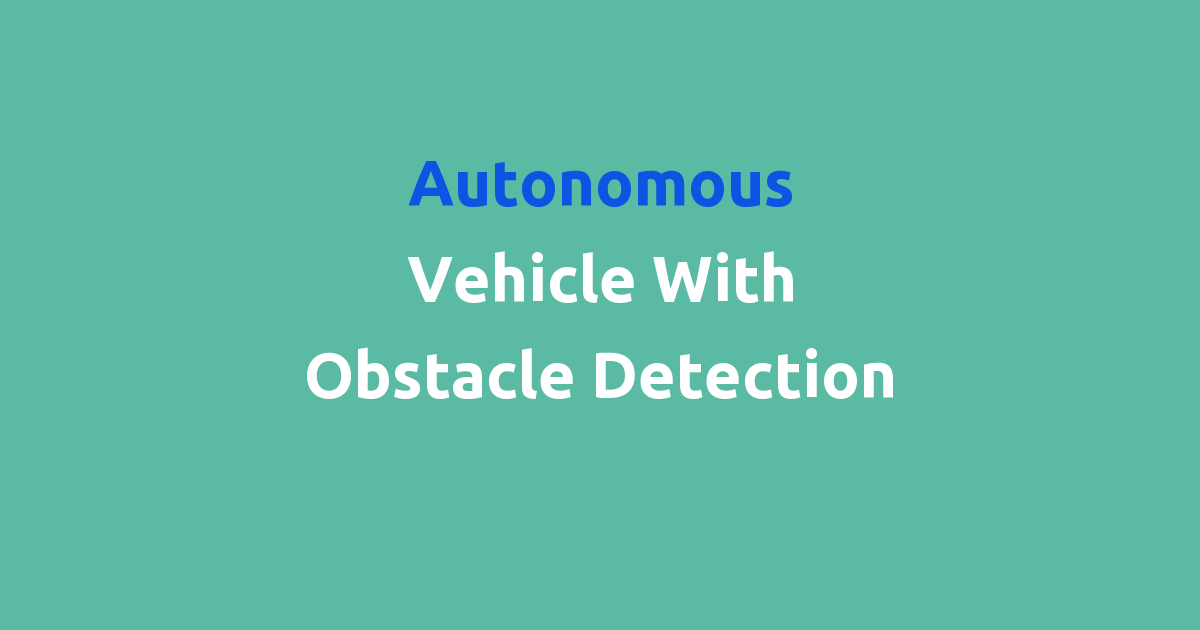Self-driving vehicle equipped with obstacle detection.
Autonomous Vehicle with Obstacle Detection
Introduction
Autonomous vehicles are the future of transportation, offering the promise of safer, more efficient travel. One of the key challenges in developing autonomous vehicles is obstacle detection, as the ability to accurately detect and avoid obstacles is crucial for ensuring the safety of passengers and pedestrians. In this project work, we will explore the development of an autonomous vehicle system with advanced obstacle detection capabilities.
Problem Statement
The main problem addressed in this project is the need for reliable obstacle detection in autonomous vehicles. Current obstacle detection systems rely on a combination of sensors, such as LiDAR, radar, and cameras, to detect and avoid obstacles in the vehicle’s path. However, these systems have limitations in terms of accuracy, reliability, and range, which can potentially lead to accidents and collisions.
Existing System
The existing obstacle detection systems in autonomous vehicles use a combination of sensors to detect obstacles in the vehicle’s path. LiDAR sensors use laser beams to measure the distance between the vehicle and obstacles, while radar sensors use radio waves to detect obstacles. Cameras capture images of the vehicle’s surroundings to identify obstacles based on visual cues.
Disadvantages
– Limited range: Current obstacle detection systems have limited range, making it difficult for autonomous vehicles to detect obstacles far ahead.
– Accuracy: The accuracy of obstacle detection systems can be affected by environmental factors, such as weather conditions and lighting.
– Reliability: Existing systems may not always provide reliable detection of obstacles, leading to potential accidents and collisions.
Proposed System
To address the limitations of the existing system, we propose the development of an advanced obstacle detection system for autonomous vehicles. Our system will integrate multiple sensors, including LiDAR, radar, and cameras, to provide accurate and reliable detection of obstacles in the vehicle’s path. Additionally, we will incorporate machine learning algorithms to analyze sensor data and improve obstacle detection capabilities.
Advantages
– Enhanced range: Our proposed system will have an extended range, allowing autonomous vehicles to detect obstacles far ahead and react in a timely manner.
– Improved accuracy: By integrating multiple sensors and machine learning algorithms, our system will provide more accurate detection of obstacles in various environmental conditions.
– Greater reliability: The advanced capabilities of our system will enhance the reliability of obstacle detection in autonomous vehicles, reducing the risk of accidents and collisions.
Features
Our proposed autonomous vehicle system with obstacle detection will include the following key features:
– Multi-sensor integration: The system will combine LiDAR, radar, and cameras to provide comprehensive coverage of the vehicle’s surroundings.
– Machine learning algorithms: Advanced algorithms will analyze sensor data to improve obstacle detection accuracy and reliability.
– Real-time processing: The system will have real-time processing capabilities to quickly identify and react to obstacles in the vehicle’s path.
– Adaptive response: The system will adapt its response based on the type and location of obstacles, ensuring safe and efficient navigation.
Conclusion
In conclusion, the development of an autonomous vehicle system with advanced obstacle detection capabilities is essential for ensuring the safety and efficiency of autonomous transportation. By integrating multiple sensors, machine learning algorithms, and real-time processing, our proposed system offers enhanced range, accuracy, and reliability in obstacle detection. This project work aims to contribute to the ongoing research and development of autonomous vehicles, paving the way for a safer and more sustainable future of transportation.

